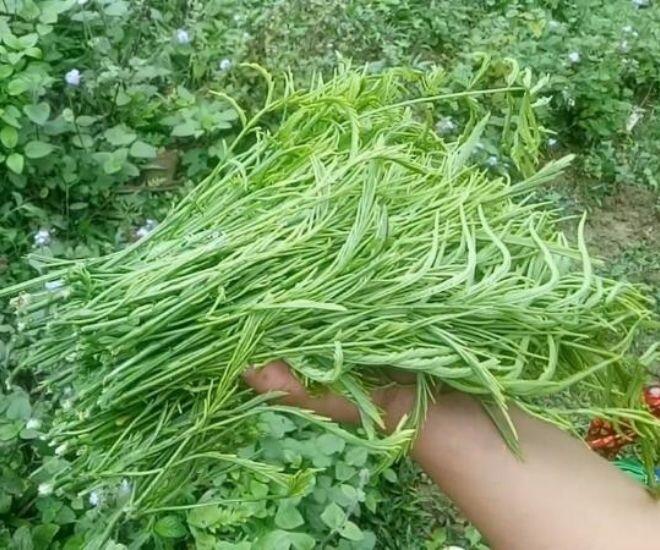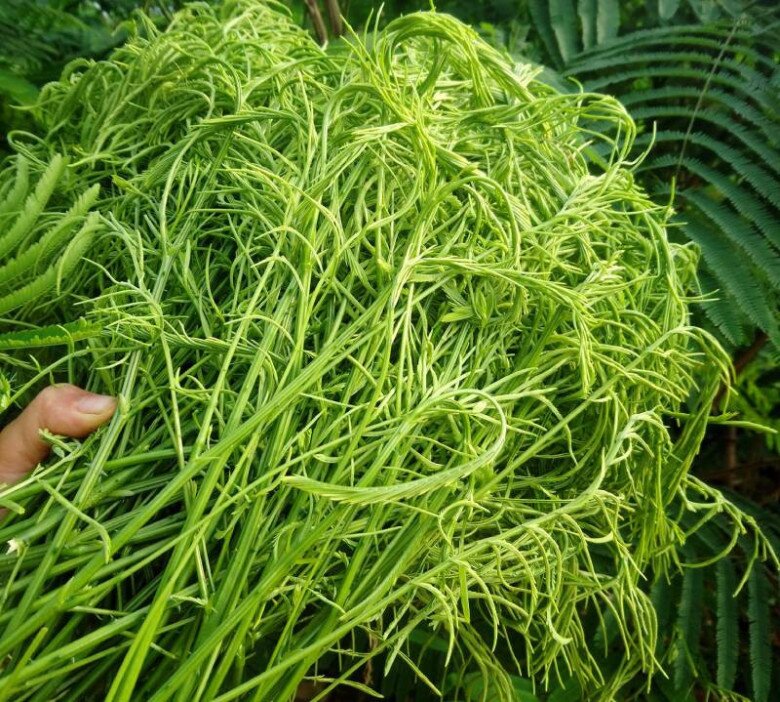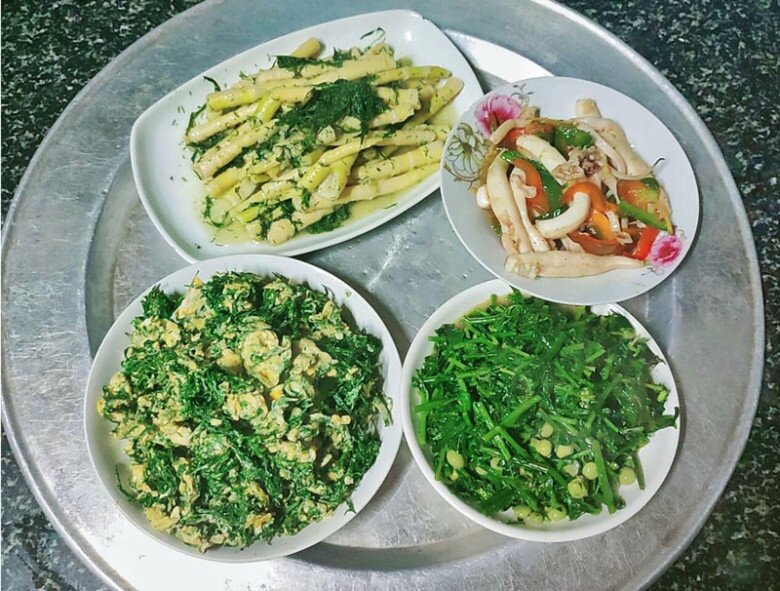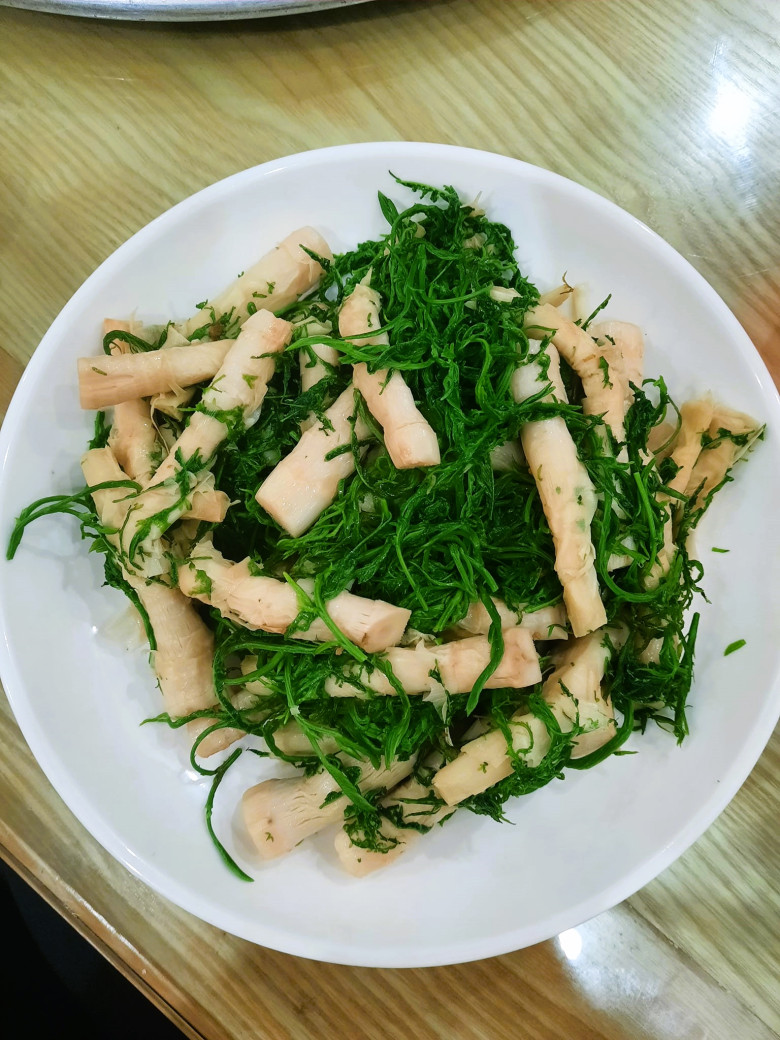
In the Thai ethnic language, “rau thối” is known as pắc nam. This wild vine grows in the forests, characterized by its long, thorny stems and dark green, symmetrical leaves. The tender young shoots are the most prized part, often used in cooking or as a medicinal herb. Harvesting requires caution due to the sharp thorns.
Rau thối thrives from March to June, when the Northwest forests are lush and humid. It’s most abundant in Son La, Dien Bien, Lai Chau, and Yen Bai. During this season, fresh rau thối appears in highland markets and is transported to cities like Hanoi, where it’s featured in Northwest specialty restaurants. While local prices are modest, it can fetch hundreds of thousands of dong per kilogram in urban areas.
The Aroma of Mountain Forest Greens
Its name, “rau thối” (stinky greens), comes from its strong odor, which can be off-putting to first-timers. However, many find the scent intriguing rather than unpleasant. The aroma softens after harvesting, and locals prefer it fresh to savor its bold flavor. Interestingly, cooking transforms it into a fragrant, crisp delight, creating a striking contrast between its raw smell and cooked taste—a unique trait that captivates many.

Beyond its culinary appeal, rau thối is a valued herbal remedy. Locals use it to cool the body in summer and treat joint issues. Dried, it’s used in traditional medicine for liver, kidney, and stomach ailments, as well as acid reflux and mouth bitterness. Its health benefits have made it a sought-after specialty, blending flavor with wellness.
Delicacies Featuring Rau Thối
Northwest cuisine shines through its creative use of forest ingredients and ethnic culinary techniques. Rau thối inspires a variety of dishes that are both unique and nutritious.
Rau Thối Salad with Spiny Bitter Gourd and Dried Pork: A signature dish in highland restaurants. Blanched young rau thối is tossed with spiny bitter gourd, shredded dried pork, fish sauce, lime, chili, and peanuts. The tangy, savory, and refreshing flavors make it irresistible.
Pork Tail Soup with Rau Thối: A nourishing family favorite. Tenderized pork tail is simmered with rau thối, creating a sweet broth and tender meat that complements the greens’ distinct taste.
Stir-Fried Rau Thối with Bamboo Shoots: A simple yet authentic dish. Crisp bamboo shoots and rau thối combine for a light, refreshing summer meal.
Stuffed Grilled Fish with Rau Thối: A festive specialty. Freshwater fish like carp or trout are stuffed with rau thối and spices, then grilled over charcoal. The fusion of fish and greens creates an unforgettable aroma.
Rau Thối Patties: A modern twist loved by youth. Minced rau thối and pork are seasoned, shaped into patties, and fried until crispy outside, tender inside. Served with rich fish sauce, it’s a hit.
Rau Thối Egg Soup: Similar to tomato egg soup but with rau thối, offering a bolder flavor for adventurous palates.
Rau thối can also be simply boiled and dipped in fish sauce or stir-fried with beef/pork. Each preparation highlights its versatility, making it a cultural culinary symbol.

For travelers, rau thối is a unique regional souvenir. Though less known than tea or plums, its distinctiveness makes it memorable. Many buy it fresh or dried, despite higher city prices, for its flavor and health benefits.
Today, rau thối graces both highland family tables and urban restaurant menus, catering to tourists. It’s a quintessential Northwest specialty, intriguing with its name, flavor, and cultural depth.

Beyond its initial aroma, rau thối reveals a crisp, sweet taste when cooked, showcasing the sophistication of local cuisine. Its culinary and medicinal value make it a Northwest treasure—a perfect gift for those exploring Vietnam’s regional specialties.






























